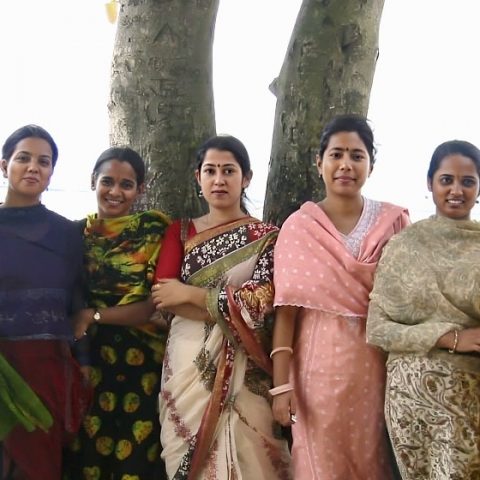One of the most persisting issues present in the world today is undernutrition, particularly among children.

Improper and irregular feeding practices are one of the key causes of childhood undernutrition. Photo: Sumon Yusuf/icddr,b
Broadly, it is characterised by stunting (low height for age), wasting (low weight for height), underweight (low weight for age) and micronutrient deficiencies or insufficiencies (a lack of important vitamins and minerals). According to World Health Organization (WHO), around 45% of deaths among children under-five years of age are linked to undernutrition. This is not surprising given that globally, 159 million children under-five are stunted and 52 million are wasted. These mostly occur in low- and middle-income countries. In Bangladesh, 36% and 14% of under-five children were stunted and wasted respectively.
Improper and irregular feeding practices are one of the key causes of childhood undernutrition and understanding dietary diversity – or lack thereof – is an important factor to address the chronic issue of undernutrition. Children from less affluent households had lower dietary diversity, their meals consisting mostly of starches with little protein or fruits and vegetables. There is limited research on the association between household food security status and dietary diversity among children under-five.
A new study at icddr,b aimed to close that knowledge gap by observing the nutritional statuses and current dietary diversity patterns among children aged 6–59 months and their associations with various immediate and underlying individual and household level factors.
The study was conducted in 2014, collecting data from 8,679 households in 20 sub-districts of Mymensingh, Sherpur, Rangpur, Dinajpur, Thakurgaon, Panchagar, and Nilphamari districts in Bangladesh.Mothers were asked about the food intake of their children in the past 24 hours and the food items reported were categorised into nine food groups:
- starchy staples
- milk/milk products
- egg
- fleshy meat/fish
- organ meat
- legumes and nuts
- vitamin A rich fruit and vegetables
- dark green vegetables
- other fruits and vegetables
In order to measure dietary diversity, dietary diversity score (DDS) was generated by counting the consumption of food items across these food groups.
Over the course of 24 hours, starch was the most commonly consumed food (93%), followed by milk (76%) and animal proteins (65%). Approximately 43% of the households which participated in the study experienced food insecurity, while children from food secure households had a 21% higher food diversity score. This is linked to the earlier hypothesis of the lack of dietary diversity among those in the lower wealth quintile.
Maternal education and occupation were also key factors.
An overwhelming majority of mothers (90%) were homemakers, yet the children of mothers who were skilled workers were reported to have a much higher (47%) dietary diversity score.
Similarly, mothers who received primary or higher education had children who scored slightly higher (15%) in their dietary diversity score than children whose mothers had no formal education.
The evidence is suggestive of a myriad of variables which can affect undernutrition in children with household wealth, food insecurity and maternal education being the primary indicators. WHO issued public health concern for a country if there is a 30% or greater prevalence of stunting, a 15% or greater prevalence of wasting, and a 30% or greater prevalence of underweight children.
This is particularly alarming as the rate of stunting, wasting and underweight statuses among children in the icddr,b study was 36.8%, 18.2% and 37.7% respectively.
This is despite the households being equally divided among various socio-demographic factors. The scientists also note that anyone with a dietary diversity score of four or less were classified as having inadequate nutrient intake; in the study it accounted for 40% of the children, who scored less than four.
In 2016, the United Nations General Assembly proclaimed 2016–2025 the ‘United Nations Decade of Action on Nutrition’ to address all forms of malnutrition. The Declaration calls for policy action across six key areas, primarily creating sustainable, resilient food systems for healthy diets; and providing social protection and nutrition-related education for all.
For Bangladesh to improve the nutritional status of the under-five population, policymakers need to develop a multi-tier approach which highlights agricultural production in conjunction with household food security. These are vital to increasing the availability and accessibility to a multitude of nutritious food. Simultaneously, social safety net programmes such as cash transfer, food transfer and other income generating programmes can be implemented to allow for more dietary options. Moreover, home-based nutrition education programmes can be initiated so that mothers (and other household members) are made aware of the importance of a diverse diet for young children in curbing malnutrition.

